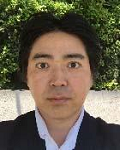
Yoshifumi Nishida
National Institute of Advanced Industrial Science and Technology, Japan
Title: Adaptive Nursing by AI/IoTâ€Based Individualized Monitoring: Longitudinal Monitoring of Elderly Gait Change at Nursing Home and Ordinary Home
Biography
Biography: Yoshifumi Nishida
Abstract
Statement of the Problem: cognitive and physical capabilities change of elderly are diversified. Such diversity in the change needs personalized support based on individualized assessment. Conventionally, sensing technology for assessment have been proposed. However, from the viewpoint of feasibility of longitudinal monitoring and easiness of operation, wearable sensors have drawbacks that users have to exchange/recharge a battery routinely and sensors embedded in living spaces also have difficulty in personal identification if multiple people live in target living space. Methodology & Theoretical Orientation: As new monitoring systems for detecting elderly gait change based on the recent Internet of Things (IoT) and artificial technology, the authors developed 1) a buttery-less shoe-shaped wearable sensor, 2) RGB-D cameras with face and posture recognition, and 3) handrail-shaped sensor as shown in Fig. 1. To evaluate effectiveness of them, we conducted experiments in a nursing home, and an ordinary home. The results of experiments using buttery-less shoe-shaped wearable sensor shows that the error of elderly location is within 1 m. The handrail-shaped sensor was evaluated for over two years in the ordinary home where a 88 years old woman lives. The results indicate that it could monitor not only longitudinal gait data but abnormal gait such as stumbling. The RGB-D technology was evaluated in the nursing home that has eight elderly adults (79 to 104 years old) and seven nursing stuffs. The error rate of person identification is within 2.9% and the error rate of walking speed is within 4.9%. Conclusion & Significance: The above experimental results indicates that the three kinds of systems are promising methods for monitoring individual elderly in actual living spaces such as a nursing home and an ordinary home in terms of easiness of operation and accuracy of data.
